
How to Choose Bike Tires
Use this guide to find the right bike tire size
and width for your bike and riding style
There are so many options out there, so how do you choose the right tires for your bike? We’ve got you covered with this helpful article on finding the best bike tires that will cover all the main questions we get, so read on to get started.
How to tell if you need to replace your bike tires
Here's some quick tips on when you start looking for replacement tires. Knowing you have a busted tire is one thing. Preventing flats before they happen in another. If you can identify these warning signs then you can replace a worn out tire before it ruins your next ride.
Here are some signs that will tell you a tire is ready to be replaced:
- Worn-down tread, especially in the center
- Knobs ripping off the sidewall
- Cracking rubber
- Cuts in the sidewall
- Continual flats even with new tubes
- Uncommonly poor handling
How to choose the right bike tire size
Here are the main factors you need to consider when shopping for new bike tires. First it’s about knowing what will fit, then you can refine your search to pick out the models that will give you the performance you’re after.
Bike tire sizes (diameter)
Before you start shopping, you need to know what tire size will fit your wheel diameter. Get the wrong size tire for your wheels and you won’t be going anywhere. Here are the common tire sizes:
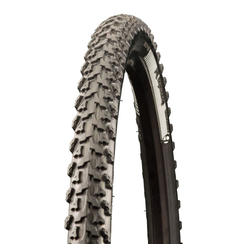
Mountain bike tires
- 29 inch: Super fast with lots of rollover power and downhill control. Perfect for the majority of trail riders.
- 27.5 inch: Agile and playful. Great for tight turns, creative lines, and getting air. Gives smaller riders the best performance. Sometimes referred to as 650b.
- 26 inch: Less common these days, mostly found on older mountain bikes but also found on fat tire bikes.
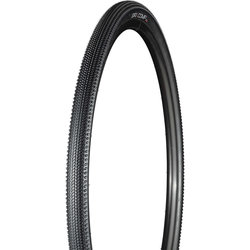
Road bike / gravel bike / commuter bike tires
- 700c: The most common size tire for road, gravel, and commuting. Great for the majority of riders. Tons of options.
- 650b: A wider tire that’s more capable off-road. Great for gravel and anyone looking for more traction and comfort. Sometimes referred to as 27.5 inch.
What’s the difference between 27.5 inch and 650b tires?
27.5 inch and 650b tires technically refer to the same size as both fit on the same diameter wheel, but 27.5 inch is more often used for mountain bikes and 650b is more often used for road and gravel bikes.
The term 27.5 inch is mostly used in the mountain biking world in order to designate it as the size between 29 inch and 26 inch. Tires designated as 27.5 inch are often (but not always) mountain bike-focused with more tread for off-road riding.
650b is more commonly used in the road/gravel/adventure worlds. They typically have less tread than mountain bike tires, which keeps them fast-rolling on a variety of surfaces, but they offer more traction and comfort than standard 700c road tires.
Common bike tire widths
Once you know the size tire you need for your wheels, the next step is to choose the right tire width. Obviously a road rider will be looking for a skinnier tire than a mountain biker, but even small differences in width can make a big difference when it comes to how your bike performs.
Here are the most common bike tire widths:
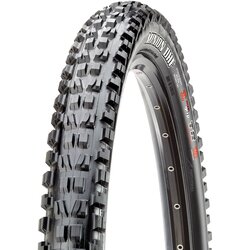
Mountain bike tire widths (measured in inches)
- 2.1 - 2.3” : great for XC riding and flowy singletrack
- 2.4 - 2.6” : trail tires, better grip on loose, technical terrain
- 2.8 - 3.0” : also called “plus tires”, great for serious traction and increased comfort
- 3.5 - 5.0” : fat bike tires for maximum float and traction
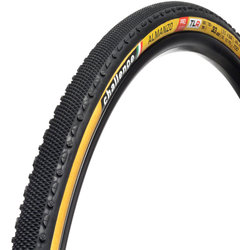
Gravel bike tire widths (measured in mm/inches)
- 38 - 45mm : speed-oriented, great for racing and fast-paced riding
- 47 - 50mm and up: adventure-focused, great traction and comfort for bikepacking and wild rides
- 1.9 - 2.3” : sometimes you’ll see gravel/adventure tires measured in inches as well, use a measurement converter if you need!
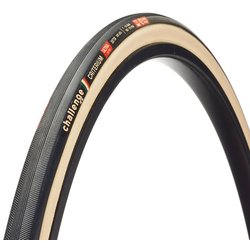
Road bike tire widths (measured in mm)
- 23 - 28mm : race tires, super fast on tarmac
- 30 - 35mm : endurance tires, still fast but more traction/comfort for long rides on varying surfaces
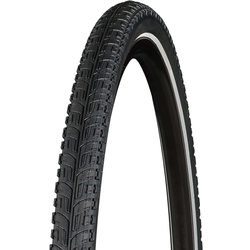
Commuter bike tire widths (usually measured in mm)
- 35 - 38mm : fast-paced, efficient commuting on mostly paved surfaces
- 40 - 45mm and up: wider and more comfortable, provides more traction on loose surfaces for the long way home
Other factors to consider when shopping for tires
Rim Width
Just knowing the wheel diameter (29/27.5/etc) isn’t always enough. If you’re thinking of buying a new tire that’s narrower or wider than the one you’re replacing, you’ll also want to make sure the tire you’re shopping for is the right width for the rim.
If you know what rims you have, you can look up its internal width and check the tire manufacturer’s rim width compatibility. This can be a little confusing, and lots of riders don’t know exactly what rims they have. We’re happy to make sure you get the right tire for your wheels, so stop by or give us a call if you want some help!
Max tire clearance (frame clearance)
Another factor to consider when considering a tire that’s wider or narrower than the one you’re replacing is frame clearance. Because bikes are designed with specific purposes in mind, their frames and forks have limits on what tires will fit and what won’t.
You can usually look up the max tire clearance of your frame on the bike manufacturer’s site, but again, if you’d like the help of professionals you can stop by or give us a call!
Need to buy tubes or gear for tubeless setup?
Bike tire size FAQs
Tubes vs tubeless bike tires, which is better?
Tubeless bike tires can be used with tubeless compatible rims without inner tubes. Without tubes, you can run lower tire pressures without getting pinch flats (caused by the tube being squished). Lower pressure also offers more comfort and traction off road, so many mountain bikers and gravel riders choose to go tubeless. Tubeless conversion requires tubeless compatible tires and rims, tubeless rim tape, and almost always an air compressor. Because tubeless can be a pain to set up, most commuters and casual riders won’t bother.
How much air should I put in my bike tires?
Every tire has a recommended PSI range on the sidewall, and it’s best to stay within those limits so you don’t get flats or blowouts. You can adjust the air pressure within that range to suit your preference.
What bike tube valves do I need?
If your tube’s valve looks like what’s on your car, you need a Schrader valve. If it's a long and skinny valve with a twistable top, you need a Presta valve.
What is a good TPI for bike tires? What does TPI stand for?
Threads Per Inch. A higher TPI (120) is lighter and more performance oriented for riders who want speed benefits. A 60tpi tire is more durable but slightly heavier.
How much tread do I need for bike tires?
Thinner tires with less tread are faster on smooth surfaces, and wider tires with more tread are better from loose, challenging roads and trails.
Are there bike tires with puncture protection?
Yes, some tires come with reinforced material in the rubber casing that can help prevent punctures. Check the tire’s description to know for sure.
